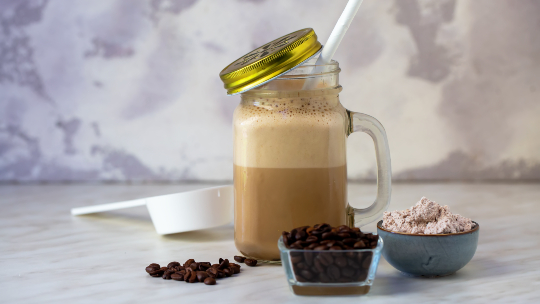Ever seen those long, firm foam tubes at the gym and wondered what they’re for? They’re foam rollers used for myofascial release, or self-massage. When we spend a long time in one position, like sitting at a desk all day, we build up tension in our muscles and the tissue that surrounds them. Over time, our bodies can become tight, or even get stuck, if that tension isn’t released. Foam rolling can relieve this uncomfortable and sometimes painful tension.
Your first roll likely won’t be comfortable, but your discomfort will lessen over time. If you ever feel pain, stop rolling. Here are a few exercises to help relieve tension from sitting at a computer all day:
Chest and Shoulder Blade Release
Working at a computer all day can create tension and in the upper back, chest, shoulders, and neck due to hunched posture.
- Lay on side with knees and hips bent. Place roller under armpit, leaving very little of the roller in front of you.
- Make a pillow with both hands and rest forehead on it. Slowly and fully inhale and exhale for several breaths, allowing your body to relax deeper with each exhale.
- Lift forehead off hands. Cradle head and neck with hands for support and slowly turn chest toward ceiling let the roller massage chest, armpits, and shoulder blades.
- Reverse the movement, slowly turning chest back toward the floor.
- Repeat steps 2 and 3 times.
Forearm Release
Many people who work on computers have tension in their forearms, especially in the arm that uses the mouse.
- Kneel on mat with roller in front of you. Place both forearms on roller, palms facing down. Slowly roll back and forth, being careful to not to put too much weight onto the forearms.
- Clasp hands. Rotate hands so that right palm faces up and left palm faces down. Place the top of the right forearm on roller. Gently roll along right forearm. Change the angle of contact on the roller to massage different parts of forearm.
- Switch forearms and repeat.
Modified Inversion with Leg Stretches
The foam roller serves as support as you lift your legs up in this inversion, a posture that brings your head below your heart. Inversions ease blood flow from feet and legs to the heart, strengthen the core, and leave you feeling refreshed.
- Lay on back with knees bent. Lift hips onto roller. Hold on to roller with one hand on each side.
- Lift both legs, feet toward ceiling. Put weight on shoulder blades, not head and neck.
- Hamstring stretch with core strengthening: Start with legs together. Slowly lower right leg toward floor and bring left leg toward you. Hold for several seconds, then switch legs. Bring both legs back to center.
- Inner thigh stretch: Start with legs together. Slowly lower legs out to sides in a straddle. Hold for several seconds.
- “Crazy legs”: Start with legs apart. Move legs in opposing half circles. Then move your legs around freely, freely as if you were pedaling a bicycle and circular motions. Try it with knees bent or legs straight.
- Hamstring stretch: Start with legs together. Bring legs toward head, keeping knees straight but not locked. Keep weight on shoulder blades, not neck. Hold for several breaths, increasing stretch with each exhale. Repeat.
Inner Thigh Release
Sitting for extended periods creates tension in the hips and inner thighs.
- Lay with hips and elbows on the mat. Place roller lengthwise beside you. Place right knee and lower leg on roller. Straighten right leg, keeping roller above knee with foot relaxed.
- Roll up and down inner thigh, but not on knee. Roll where the leg meets body. For increased intensity, bend and straighten knee as you roll the inner thigh.
- Repeat on the left side.
Karen Watanabe has been teaching group fitness for over 20 years and foam rolling since 2007. She travels the world teaching Drums Alive to other fitness instructors, educators, and therapists.


.jpg)

